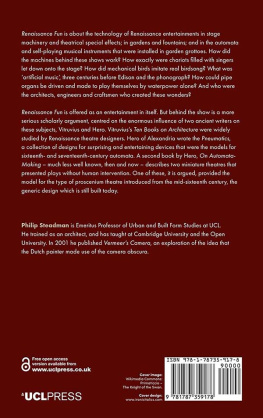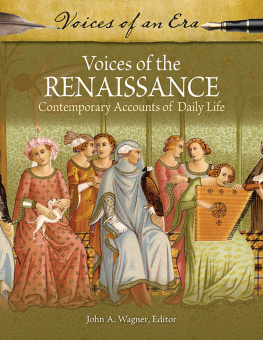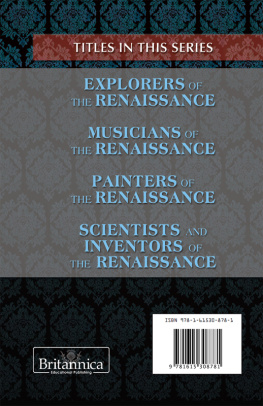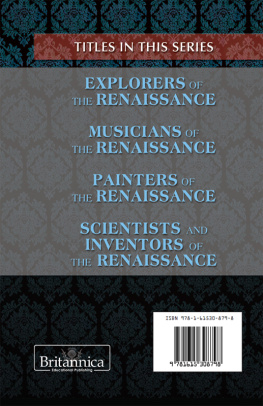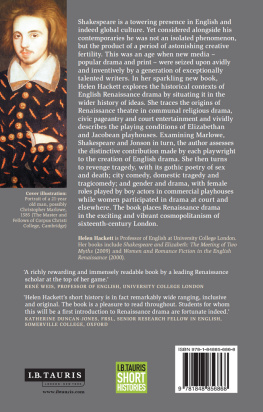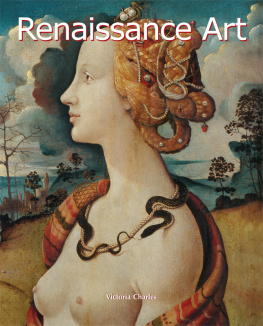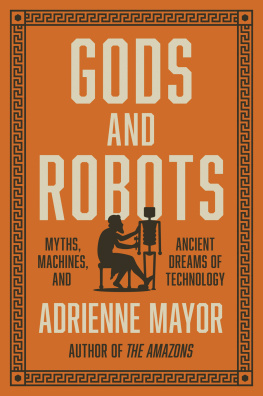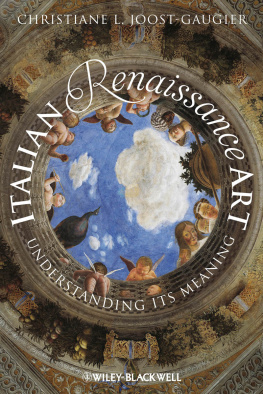

First published in 2021 by
UCL Press
University College London
Gower Street
London WC1E 6BT
Available to download free: www.uclpress.co.uk
Text Philip Steadman, 2021
Images Philip Steadman and copyright holders named in captions, 2021
Philip Steadman has asserted his rights under the Copyright, Designs and Patents Act 1988 to be identified as the author of this work.
This book is published under a Creative Commons Attribution Non-commercial Non-derivative 4.0 International licence (CC BY-NC-ND 4.0). This licence allows you to share, copy, distribute and transmit the work for personal and non-commercial use providing author and publisher attribution is clearly stated. Attribution should include the following information:
Steadman, P. 2021. Renaissance Fun: The machines behind the scenes. London: UCL Press. https://doi.org/10.14324/111.9781787359154
Further details about Creative Commons licences are available at http://creativecommons.org/licenses/
Any third-party material in this book is published under the books Creative Commons licence unless indicated otherwise in the credit line to the material. If you would like to reuse any third-party material not covered by the books Creative Commons licence, you will need to obtain permission directly from the copyright holder.
ISBN: 978-1-78735-917-8 (Hbk.)
ISBN: 978-1-78735-916-1 (Pbk.)
ISBN: 978-1-78735-915-4 (PDF)
ISBN: 978-1-78735-918-5 (epub)
ISBN: 978-1-78735-919-2 (mobi)
DOI: https://doi.org/10.14324/111.9781787359154
Contents
My first and warmest thanks go to Gregorio Astengo as skilled, persistent, knowledgeable and energetic a research assistant as anyone could wish for. Gregorio secured copies of many of the more obscure and fugitive manuscripts, papers, theses and books that I have consulted. He made translations from the Latin and from the Italian, and checked my Italian translations. He also built and photographed models of stage scenery.
I have wandered a long way from my own areas of expertise perhaps too far and so am especially grateful for the help and advice of specialists in many fields. In alphabetical order these are: George Auckland (magic lanterns), Mark Barrett (physics), Richard Beacham with Janis Atelbauers (Heros fixed theatre), Ruth Brandon (advice on music, French and much else), Tom Crowther (Aristotle), Richard Difford (history of optics), Marcela Araguez Estobar (German translation), J. V. Field (Kircher and Hero), Nick Helm (history and design of theatres), Tim Jenison (optics and pipe organs), Martin Kemp (Leonardo), Bob Lowe (physics), Janet Nelson (medieval history), Martha Nussbaum (Aristotle on automata), Sophia Psarra (Greek technology), Andreas Schafer (German translation), Teller (stage magic) and Mike Zyw (Tuscan wild flowers). A number of anonymous reviewers made useful suggestions and corrections. One reviewer was particularly helpful and thorough, and saved me from many solecisms. Phil Tabor was enthusiastic and suggested the books title.
The research was supported financially as ever by a large grant from the Steadman Foundation.
John Evelyns Grand Tour
In November 1643 John Evelyn set out from England on a series of journeys around the Low Countries, France and Italy in an early and unusually extensive version of the Grand Tour. Evelyn was an amiable 23-year-old with an Oxford education, a moderately deep purse, and some useful contacts and introductions. He knew Latin and acquired other languages as he travelled. He also had an intrepid spirit that served him well in some tricky moments, from altercations with customs officers to ambushes by bandits. He was endlessly curious, talked to everybody and on his return wrote up his experiences in the Diary that remains his greatest claim to fame.
Evelyns travels were spread out over eight years, with some short trips back home. He visited cathedrals, palaces, monasteries and universities. He saw the classical ruins of Rome and southern Italy. He climbed Mount Vesuvius and journeyed across the Alps in winter on horseback. And he saw many of the paintings, sculptures and works of architecture produced in the Renaissance of the visual arts of the previous two centuries.
But Evelyn also saw and enjoyed a great variety of other entertainments and amusements, some serious and refined, others vulgar and trivial. Indeed, to judge by the space he devotes to them in the Diary, and the enthusiasm of his descriptions, these often drew more of his attention than the art collections, which he tends to cover dutifully with bare lists of artists and titles of works.
In November 1644 Evelyn paid a visit to the Collegio Romano, the Jesuit college in Rome, where the polymath Athanasius Kircher Catoptrics was the study of mirrors and the reflection of light. Kircher devised several optical entertainments making use of mirrors and lenses, including camera obscuras and magic lanterns.
Evelyn visited many of the great Renaissance and Baroque gardens of Italy and France, and admired their walks, parterres, groves and statuary both ancient and modern. He was entranced by the jettos of water that made patterns of spray in the air in the shapes of glasses, cups, crosses, crowns or fleurs de lys. Other fountains imitated the sound of thunder or produced artificial rainbows. In May 1645 at the Villa Aldobrandini he saw a copper ball that continualy daunces about 3 foote above the pavement, by virtue of a wind conveyed seacretly to a hole beneath it.
In the same month Evelyn visited the gardens of the Villa dEste in Tivoli, where he enjoyed the scale model of the city of Rome with its stream representing the Tiber:
In another garden a noble Aviarie, the birds artificial, & singing, til the presence of an Owle appeares, on which the[y] suddainly chang their notes, to the admiration of the Spectators: Neere this is the Fountaine of Dragons belching large streames of water, with horrid noises: In another Grotto, called the Grotta di Natura, is an hydraulic Organ
This was not the only water-powered organ that Evelyn saw. He mentions hearing artificial music in several places on his travels.
One more type of entertainment about which Evelyn was greatly enthusiastic was the theatre: he attended many performances on his travels. Arriving in Venice in June 1645, he went to the opera accompanied by my Lord Bruce to see a performance of Hercules in Lydia. The music and singing were excellent, with variety of Seeanes painted & contrived with no lesse art of Perspective, and Machines, for flying in the aire, & other wonderfull motions. So taken together it is doubtlesse one of the most magnificent & expensfull diversions the Wit of Men can invent. In Hercules the scenes were changed 13 times.
Evelyn will be our occasional guide, reappearing throughout the book with descriptions and reactions as will the French essayist and philosopher Michel de Montaigne, who wrote of his travels in Italy a few years later, and enjoyed many of the same experiences.
The common factor in all this variety of entertainments was that they depended on machines, or, to use an anachronistic term, technologies. The fountains relied on elaborate systems of water control: aqueducts, reservoirs, pipes and nozzles. Animal and human automata were worked by concealed hydraulic, pneumatic and mechanical apparatus. The machinery of the Renaissance theatre brought celestial personages down from the clouds (gods from machines) and brought characters from the Underworld up from below. Scenery was rotated, slid, rolled and replaced using yet more mechanical devices. Sets were built and painted to create realistic illusions of depth using the technology of perspective.
Next page
